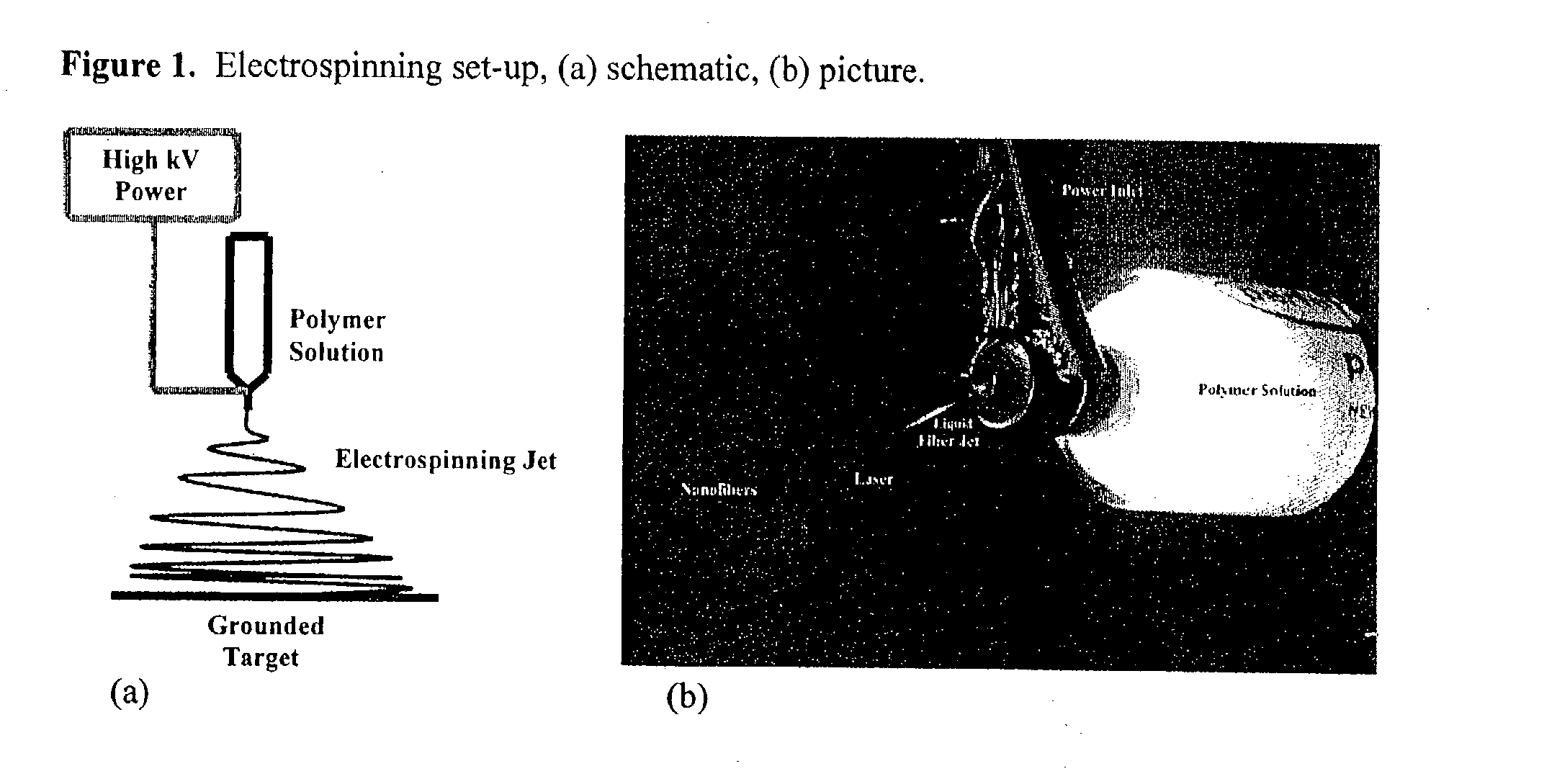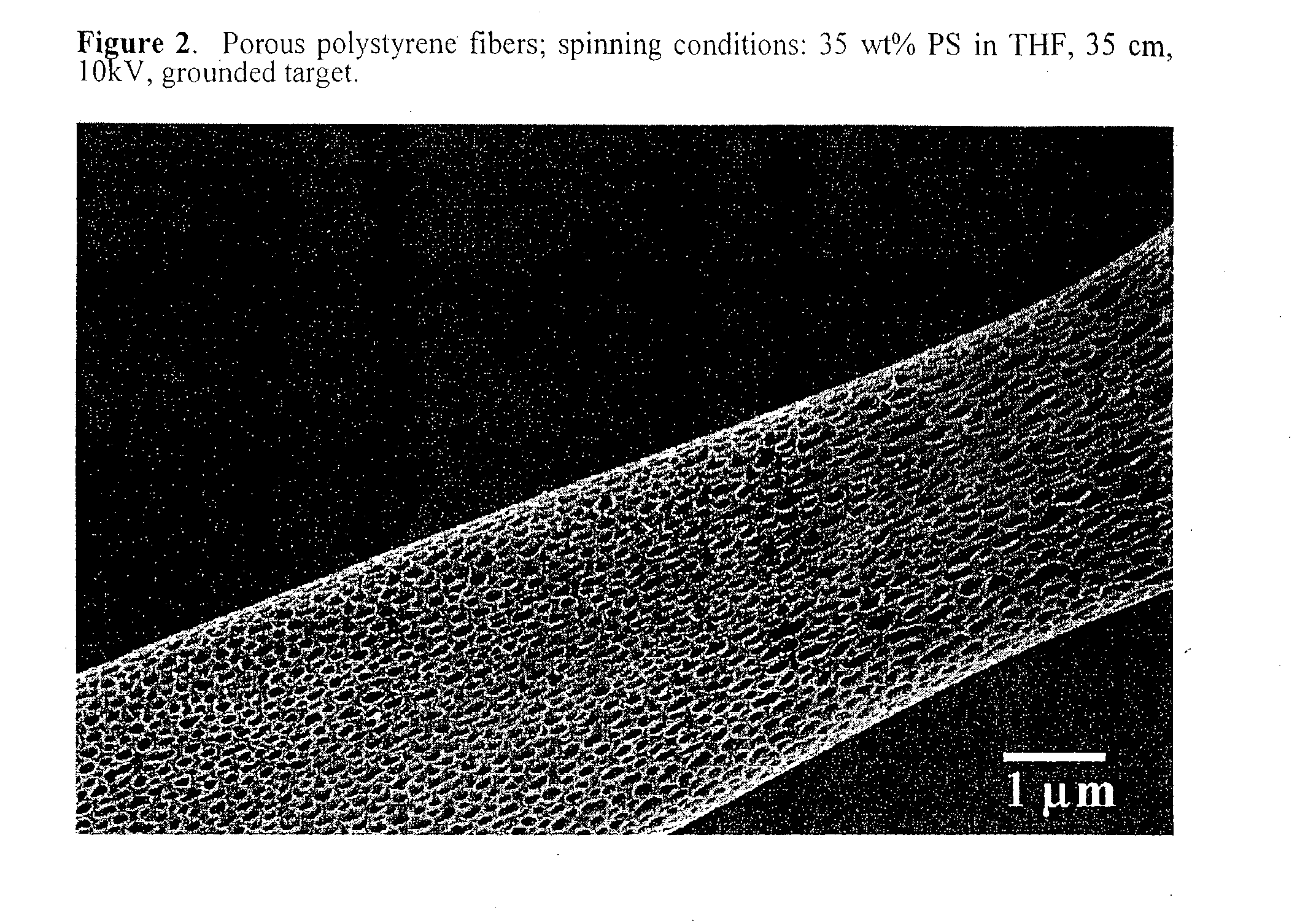Production of nanowebs by an electrostatic spinning apparatus and method
an electrostatic spinning and nano-web technology, applied in the direction of chemistry apparatus and processes, weaving, transportation and packaging, etc., can solve the problems of large quantities of fibers and/or non-woven cloth or mats, structure having the desired ultra-high ratio of surface area to volume, and unable to produce, etc., to achieve the effect of large throughput and high ratio
- Summary
- Abstract
- Description
- Claims
- Application Information
AI Technical Summary
Benefits of technology
Problems solved by technology
Method used
Image
Examples
Embodiment Construction
[0027] We have produced polymer fibers and interconnected fibrillar web network at the micro and nanometer length scales by electrospinning, a process that is derived from the classical technique of electrospraying. In contrast to melt spinning, electrospinning uses a high voltage to create an electrically charged liquid jet of polymer solution. Electrical forces at the surface of the polymer solution (or a low viscosity melt) overcome the surface tension of the solution, and an electrically charged jet, 50-100 μm in diameter, for example, is emitted, as shown in FIG. 1. In FIG. 1, the laser beam is used to characterize the orientation of fibers.
[0028] As the jet is accelerated towards a grounded target by electrical forces, the solvent evaporates and the charge is concentrated on the solid fiber eventually causing it to reach an instability point where the electrospinning jet begins to splay, producing submicron diameter fibers (bundles of nanofibers are also evident on lower left...
PUM
| Property | Measurement | Unit |
|---|---|---|
| Temperature | aaaaa | aaaaa |
| Viscosity | aaaaa | aaaaa |
| Density | aaaaa | aaaaa |
Abstract
Description
Claims
Application Information
 Login to View More
Login to View More - R&D
- Intellectual Property
- Life Sciences
- Materials
- Tech Scout
- Unparalleled Data Quality
- Higher Quality Content
- 60% Fewer Hallucinations
Browse by: Latest US Patents, China's latest patents, Technical Efficacy Thesaurus, Application Domain, Technology Topic, Popular Technical Reports.
© 2025 PatSnap. All rights reserved.Legal|Privacy policy|Modern Slavery Act Transparency Statement|Sitemap|About US| Contact US: help@patsnap.com



